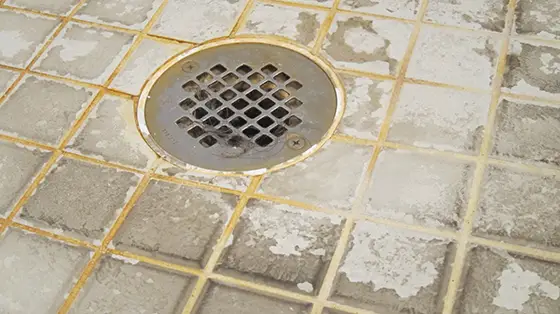How to Remove Hard Water Stains

How to Remove Hard Water Stains
Quick Column Summary:
- white vinegar removes hard water spots
- soaking and patience is key
- vinegar can harm marble
- muriatic acid can be used, but it's POWERFUL
There's a good chance you have to deal with hard water stains on many of your surfaces. Municipal water systems don't always deliver nice soft water to your home via the network of buried water mains.
The white rings or spots you see on glasses, countertops, shiny faucets, shower doors, etc. are created when tap water evaporates and leaves behind the very tiny minerals and elements that are dissolved in the water. Calcium, calcium carbonate, magnesium, iron, etc. are common hard water deposits.
The most common element in hard water is calcium. That's usually the culprit responsible for the pesky white stains and spots you see. The good news is you can remove these spots from just about any surface if you recall a few of your high school chemistry classes.
Preventing the spotting is easy if you always wipe off wet surfaces. This puts the hard water minerals and elements in the towel or rag. But all too often you don't wipe things off and the spotting or rings are there for you to deal with at a later date.
The deposits, if you could look at them with a high-powered microscope, have sharp crystals that act like tenacious burrs and they attach to surfaces like epoxy. Removal is very tough and you risk damaging the surfaces if you try to scrub them off with some abrasive pad or abrasive cleaning powder.
This was the Mystery Link in Tim's January 5, 2016 AsktheBuilder Newsletter.
Degree of Difficulty: 
Step One: Grab a bottle or jug of common white vinegar. Vinegar is a very weak acid, acetic acid to be precise. The hard water deposits are alkaline in nature. Acids do a great job of dissolving alkaline minerals.
Step Two: It's best to do a test on a small area to ensure the vinegar will not harm the object you're trying to clean. The only thing you usually have to be very careful with is marble. Marble is a natural stone that has a high calcium or calcium carbonate content. Vinegar can etch the marble and cause any gloss to be dulled.
Step Three: Saturate a small 2-inch by 2-inch piece of clean paper towel with the white vinegar. Immediately pat this wet paper towel onto the spotted surface. Slightly tamp the paper towel so it's in complete contact with the surface and hard water deposits.
Step Four: Allow the paper towel to stay in place for at least two hours. This allows the magic of the chemistry to happen. During this time period the acid reacts with the solid hard water deposits dissolving them. This process unlocks the deposits from the surfaces leaving no damage behind.
Step Five: At the end of the wait period, remove the paper towel scrap, rinse with clear water and dry the surface with a clean soft rag. The area where the vinegar contacted the hard water deposit should be spot-free or have fewer spots.
Step Six: If the hard water deposits are chronic where they've been allowed to build up over months or years, it can take repeated applications of the vinegar to completely remove them. Heating the vinegar or keeping the vinegar warm with a hair dryer while it's working will accelerate the chemical reaction between the acid and the deposits. Add more vinegar if the hair dryer evaporates it.
Step Seven: Stubborn hard water deposits can be removed with a stronger acid like muriatic acid. Beware, this acid is much more aggressive and can damage any number of surfaces. Even when this acid is diluted to one part acid to ten parts water, it's very aggressive. Use this acid with great caution.
Test small areas to ensure there's no damage to the thing you're trying to clean. Work in a well ventilated area and follow all safety instructions that come with this acid including goggles, rubber gloves and old clothes.
Step Eight: Toilets often suffer from hard water deposits leading to poor flushing. The deposits can build up around the siphon jet hole in the bottom of the toilet bowl. Muriatic acid is very effective at dissolving these deposits. Don't flush the acid into the sewer system if you use it. Neutralize the acid in the toilet bowl with baking soda before flushing. Add enough baking soda into the bowl until any fizzing stops.
Summary: In almost all cases you'll discover the white vinegar is very effective and will remove all but the thickest or most stubborn hard water deposits. The key is multiple applications and patience. Once the surfaces are clean, always wipe off water drops and spills so you never have to work with the vinegar again!
Column HT027